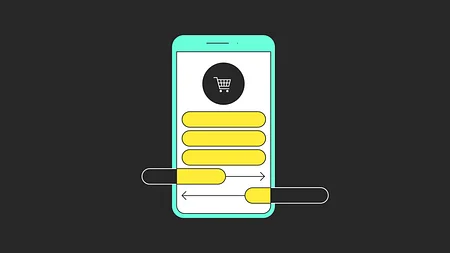Black Friday 2019: How 3 American fintechs are faring in the UK

On the last American holiday before Christmas, we look at the performance of three companies across the pond.
Krispy Kreme. Stranger Things. Five Guys. There’s seemingly no shortage of American cultural sensations that arrive on British soil to great fanfare.
But for whatever reason, some American traditions just don’t make the trip across the pond. Sure, plenty of British retailers have adopted Black Friday, but few in the UK celebrate Thanksgiving, the holiday it generally accompanies.
Right now, it’s too early to tell whether US fintechs will leave a big footprint like New Balance or go the way of Turkey Day. It won’t be for a lack of effort, if the sheer number of major American players announcing their entry to the UK in the past year is any indication; some have made significant progress, others still have yet to crack the market.
So to celebrate Black Friday, we’re checking in with three American fintechs that announced their expansion into the UK in the past year. Each offers a unique look at the challenges and opportunities that come with breaking into the British market.
1. Marcus by Goldman Sachs
Marcus was primed for success when it made its UK debut in September 2018.
Goldman Sachs’s digital-only retail bank entered the savings market when it was “at the bottom of the interest rate trough,” says 11:FS Head of Research Sarah Kocianski. Boasting a 1.5% interest rate, Marcus quickly differentiated itself in a space left relatively untouched by challengers.
“It was doing something that was a bit different,” says Kocianski. “We’d already got Monzo and Starling at that point, but savings hadn’t been tackled particularly well by digital-only brands”.
The results were immediate. Within its first month, Marcus had attracted 100,000 UK customers and £2.3 billion in deposits. By May 2019, it had signed 250,000 customers who’d deposited $8 billion.
“It did what people need to do with these propositions,” says Kocianski. “It offered a fantastic interest rate to get people through the door; it had the money and resources behind it to go out there and market it properly; and the user experience from an online perspective was just brilliant”.
I think Marcus is one of the few that can play in the mass-market space if it gets it right
Sarah Kocianski, 11:FS Head of Research
But recent news hasn’t been so rosy. Following declines in the savings market, Marcus dropped its introductory rate to 1.45% in September. Customers who’d signed on at launch saw their rate tumble to 1.35%, but were able to extend their 0.15% bonus manually.
While Marcus’s rates remain a key selling point, Kocianski says new entrants are chipping away at its core proposition.
“It’s still one of the best interest rates out there, but I don’t think it’s as competitive because we’ve seen more companies come into the savings market,” she says. “For Marcus to continue customer acquisition and deposits at the rate it was doing in the UK, it has to do something different now. The rate is not enough”.
Kocianski adds that automated investing may offer a solution.
Indeed, at Schwab’s Impact conference this month, Goldman’s Head of FinLife Rachel Schnoll said the investment bank had built a robo advisor for small clients but had yet to deploy it. Given that Goldman recently brought Marcus into its investment management division, Kocianski suggests it could move into financial management in addition to savings and loans. Still, time remains of the essence.
“I think Marcus is one of the few that can play in the mass-market space if it gets it right, particularly with the resources and brand capital behind it,” says Kocianski. “I don’t think it needs to go down that niche route; it could do well, but it has to do something quickly”.
2. Plaid
By the time Plaid announced its UK expansion back in May, the San Francisco-based API developer had already been valued at $2.65 billion.
It achieved this unicorn status by disrupting a comfortable aggregator market that still relied on outdated technology, says 11:FS Managing Partner Sam Maule. Today, companies such as Venmo and Robinhood use its infrastructure to integrate with accounts in over 11,500 banks and credit unions.
“It was able to come in with no legacy core, whereas other aggregators were operating off of stacks that were more than a decade old,” says Maule. “It gave Plaid a distinct advantage, I would say similar to what Monzo, Starling and others have had”.
So how will Plaid fare in a UK market that has a more mature understanding of Open Banking and already hosts players like TrueLayer and Bud? Updates have been relatively scarce, but at the time, it had connected with eight of Britain’s largest incumbents and challengers, allowing clients to access up to 70% of current accounts instantly.
Plaid’s not the first one in, but they’re early enough that I think they can make a big difference
Sam Maule, 11:FS Managing Partner
Plaid has also partnered with fintech firms such as Cleo and Pandle. Another example is Emma, a money management app that Plaid had worked with prior to its UK launch. Emma has since expanded into the US, likely using Plaid’s infrastructure. The move is consistent with Plaid’s stated intention to help fintechs enter new markets around the world.
“We’re not just talking about launching in the UK here, we’re talking about a full international strategy,” CEO and co-founder Zach Perret told CNBC at the time. “Our hope is that it becomes easier for fintech firms to go international”.
Last week, the company made further inroads into Europe, offering services in Ireland, France and Spain. When asked whether Plaid could help American financial institutions integrate into these territories, Maule was optimistic.
“You think about what Stripe has done, and what many others have done, and you understand there’s a path to success in both places,” he says. “Plaid’s not the first one in, but they’re early enough that I think they can make a big difference”.
3. Robinhood
News of Robinhood’s UK expansion has bookended 2019. TechCrunch reported in January that the fee-free stocks and crypto platform was secretly planning to hop across the pond, and the app debuted its waiting list last week ahead of an official launch next year.
The intervening ten months have been far from uneventful, though. A week before Robinhood announced it had received regulatory approval from the FCA, its competitor Revolut put a commission-free trading product into limited release. Then there’s Freetrade, which launched over a year ago and recently received $15 million in Series A funding.
Despite competition from these companies and other stock trading apps like eToro, Robinhood can still differentiate itself, says 11:FS co-founder Simon Taylor.
“It’s true we already have some fintechs in the UK like Revolut and Freetrade who offer similar capability, but a lot of what made Robinhood successful still stands,” he says. “They offer simple pricing, play to an under-served segment and provide something compelling”.
Robinhood is a slick machine that has proven its ability to grow a user base and scale
Simon Taylor, 11:FS co-founder
Currently, Revolut only offers unlimited free trades to its Metal account holders; Premium customers get eight free trades per month, while Standard users receive three. Freetrade’s transactions are fee-free, but only if they execute at the end of the business day – immediate executions carry a cost of £1 per trade.
Robinhood, on the other hand, doesn’t charge fees to free users, instead making money through methods such as order rebates and its Gold subscription service, among others. It’s currently valued at $7.6 billion, a figure that dwarfs Freetrade and Revolut ($1.7 billion).
Above all, more than six million people currently use the app in the US. In Taylor’s view, this performance is a promising sign for its success in the UK.
“Robinhood is a slick machine that has proven its ability to grow a user base and scale,” Taylor says. “That in itself is significant. Its track record is the biggest indicator of potential success for me”.
CTA: Want to know more about US fintechs launching overseas? Subscribe to Fintech Insider to get the latest news from industry experts.


